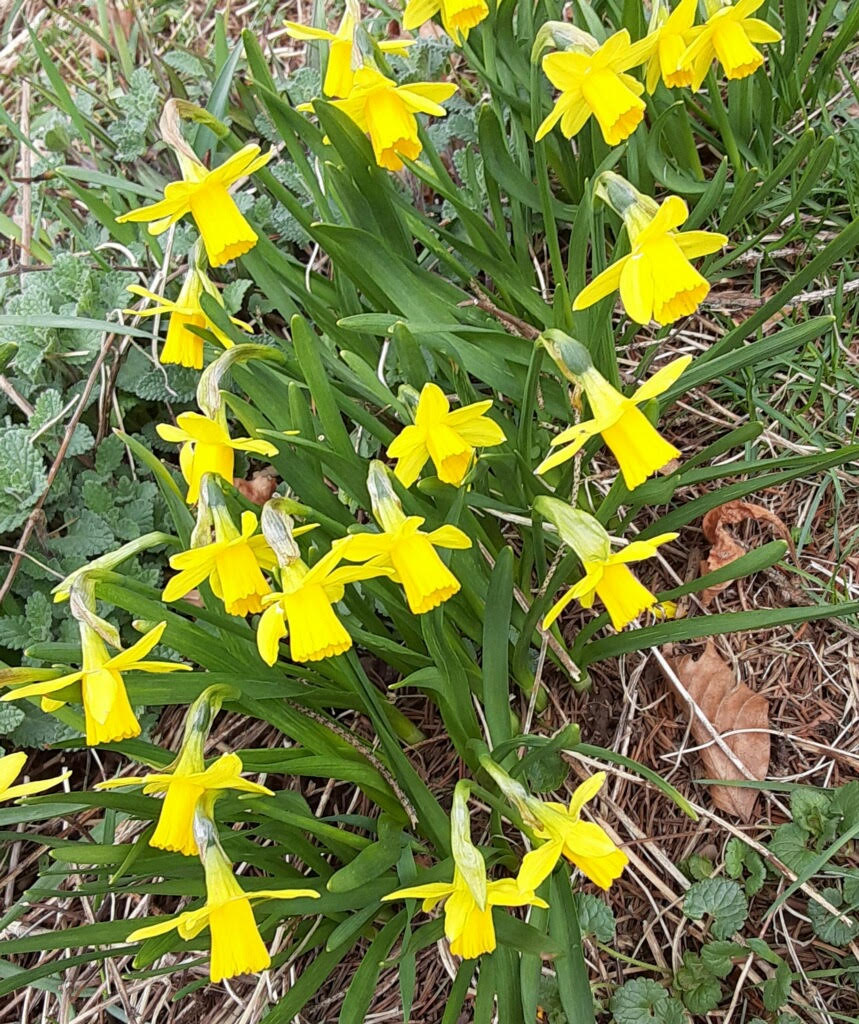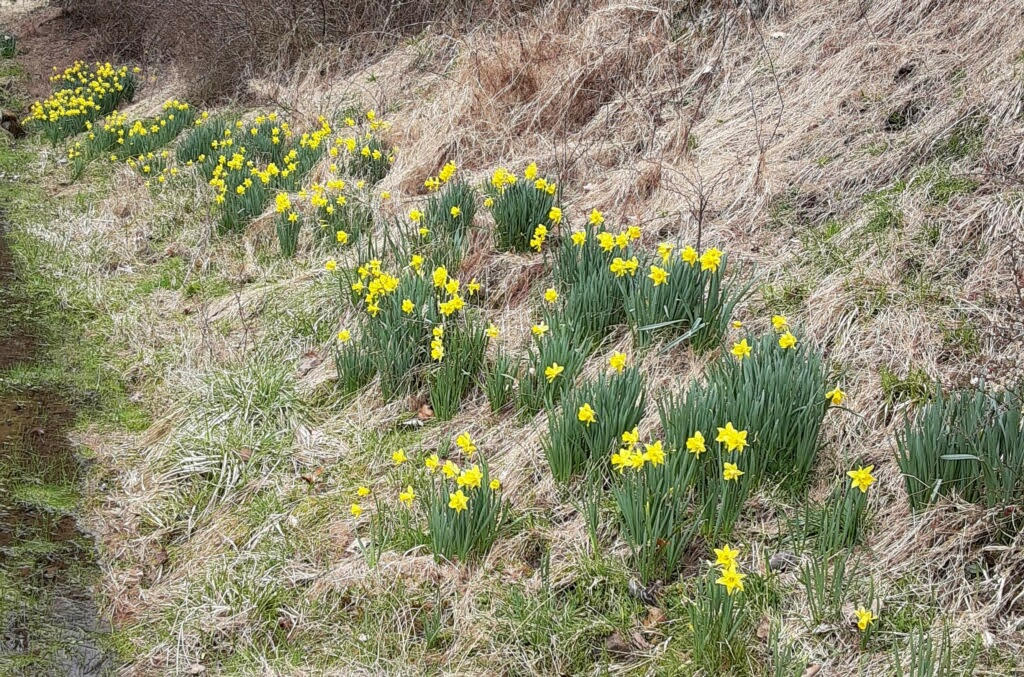By, Susan Sprout
English poet William Wordsworth (1770 to 1850) made his home in the Lake District of northwestern England for sixty of his eighty years. A lover of nature, he wrote, “Come forth into the light of things, and let nature be your teacher.” In 1807, he made Lake Windermere’s “host of golden daffodils” famous in his poem “I Wandered Lonely as a Cloud”. As a sixth-grade student, I was required to memorize his poem. I think of him, and my teacher, fondly each and every spring as the local daffodil population blooms.
In 1905, artist and writer Beatrix Potter bought property in the Lake District, an area where she had spent childhood holidays with her family. She set many of her Peter Rabbit books there and used money from the sales of them and her paintings to support a movement to prevent development on Windermere’s lakeshore. She also helped a group who protested against widening a road that passed through Wordsworth’s daffodil field! She wrote,”This little corner of the country should be kept unchanged for people who appreciate its beauty”. An old friend of hers was one of the founders of England’s National Trust, created in 1895. Beatrix supported the Trust by willing 4,000 acres of land and fourteen farms to it. In 1951, the Lake District was made a national park. In 2017, it became a World Heritage Site. Small beginnings can lead to great outcomes!

It’s daffodil time right now in Pennsylvania. Perhaps you have planted their bulbs to grow and spread on your property. They, at ground level, along with the taller Forsythia bushes, certainly brighten our landscape. Daffodils are not native plants. They could have been brought here from many parts of Europe, North Africa, the Mediterranean region, or Western Asia where they grow naturally. They are good plants for woods’ clearings, grasslands, rocky ground. I’ve found them in patches along creeks where they probably washed in from upstream.

Daffodils are in the genus Narcissus. Folks seem to use both names interchangeably. Botanists who studied them have changed their family name and identified a whole bunch of species and cultivars based on frilly-edged or smooth, center coronas like bowls or trumpets, with the same or contrasting colors, having multiple flower stems. Yikes, our daff-o-down-dillies are pretty complicated! And pretty looking, but definitely not for eating. Even deer don’t like them. They contain lycorine, a bad-tasting alkaloid, but good for medical science that has found promising uses for its anti-bacterial, anti-viral, anti-cancer and anti-inflammatory properties.

